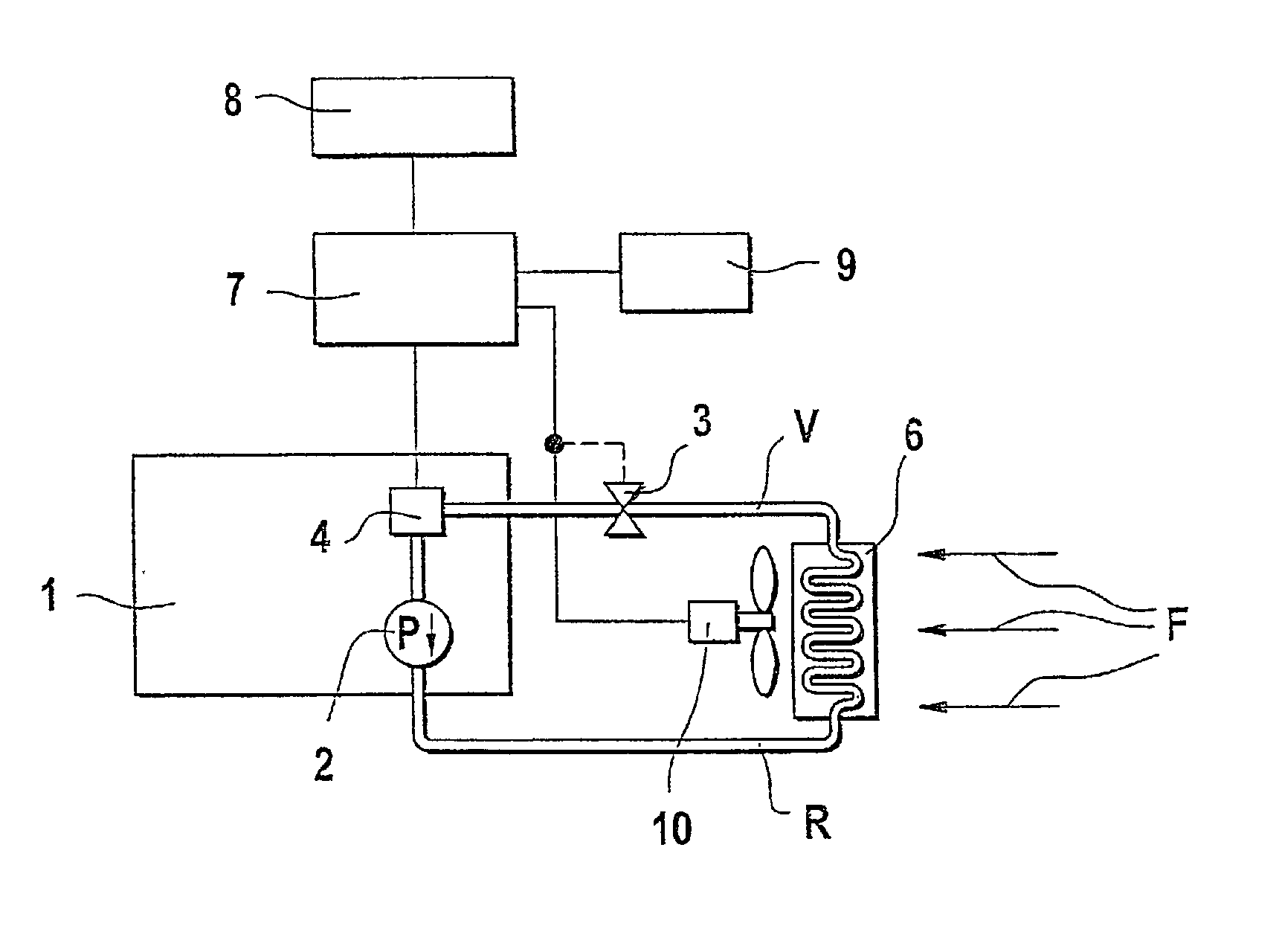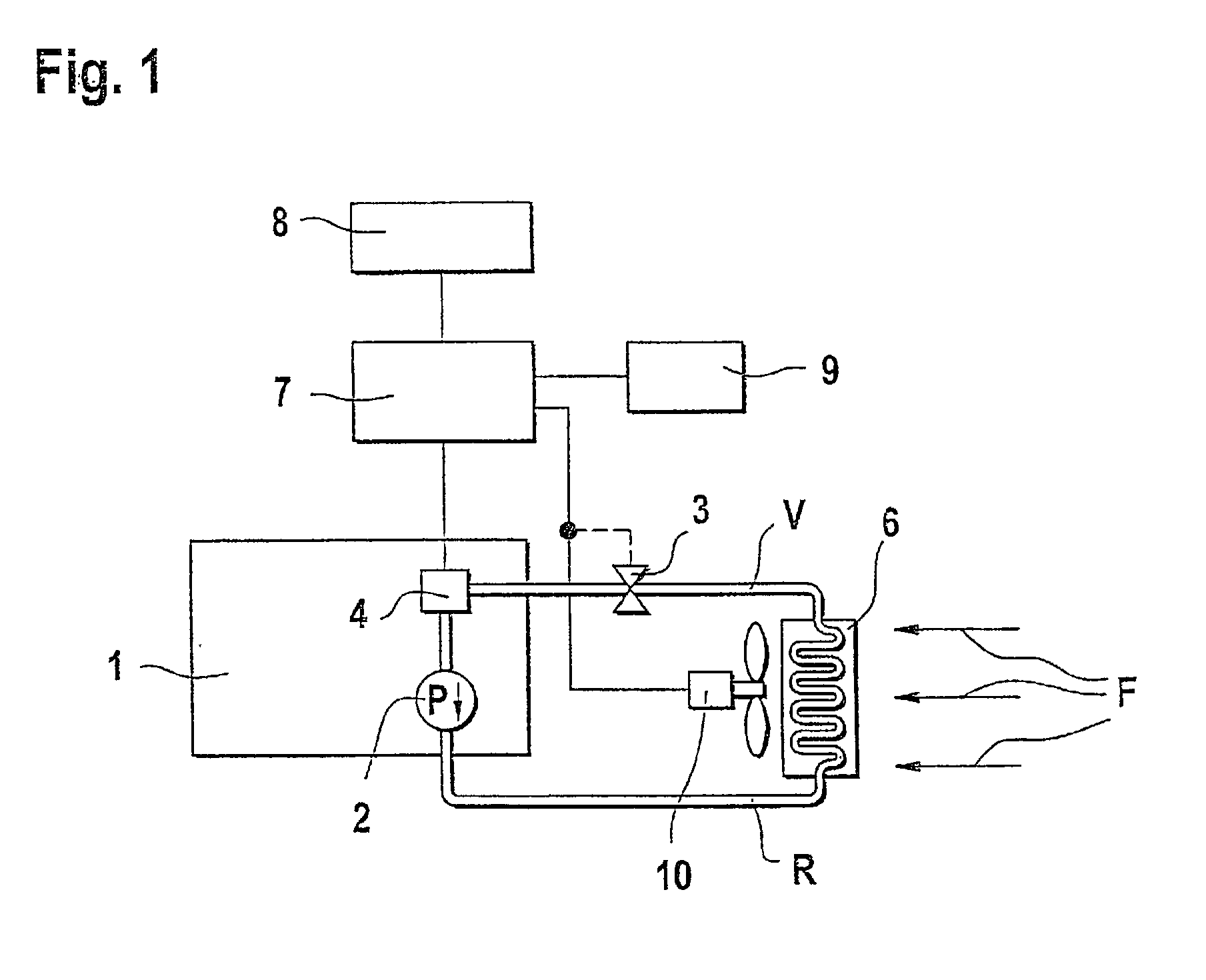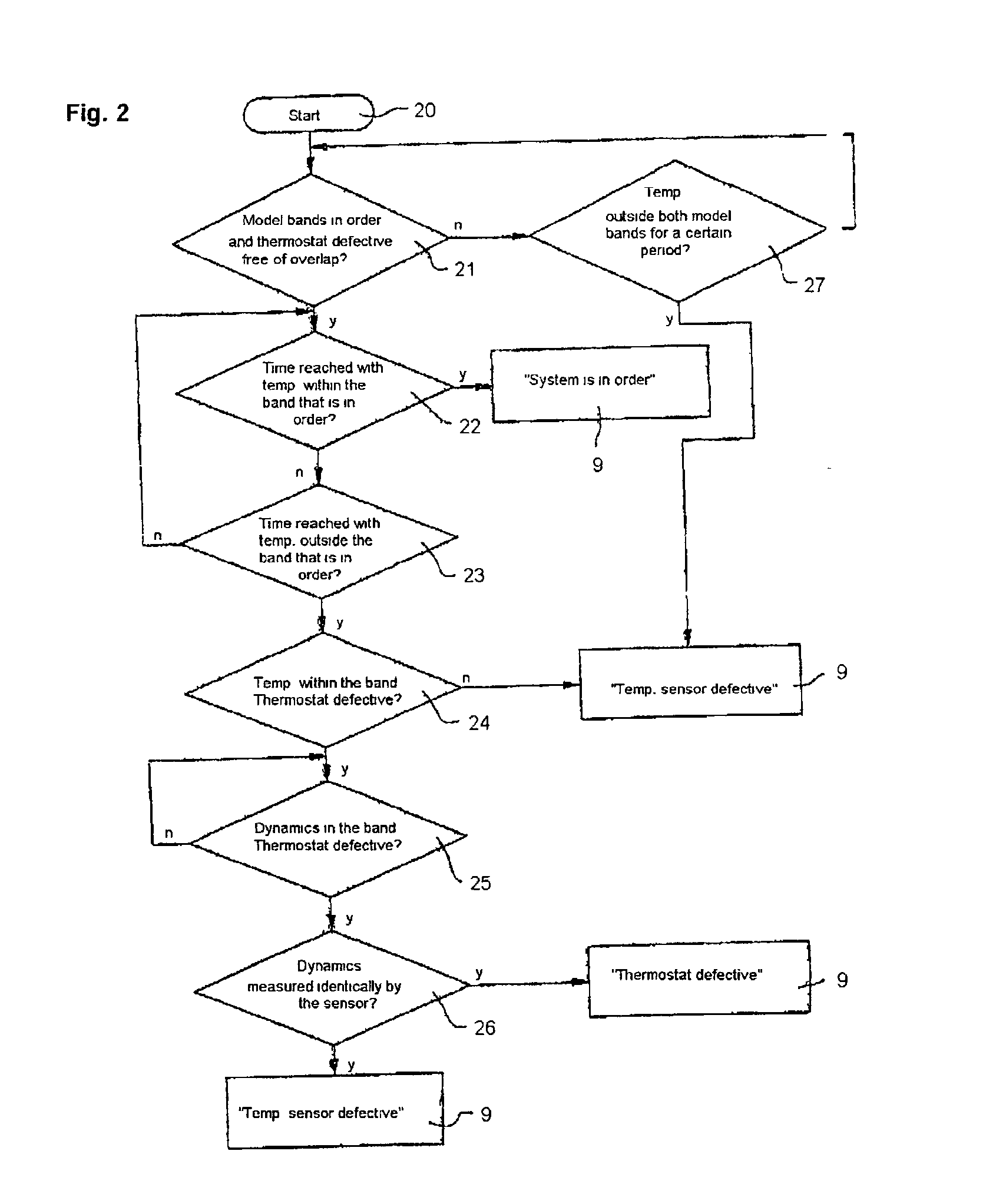Method for detecting errors in a motor vehicle engine cooling system
a technology for engine cooling and errors, applied in the direction of machines/engines, mechanical equipment, instruments, etc., can solve the problems of not being able to distinguish between defects in the supply line or the display, and not being able to determine whether the thermostat valve or even the temperature sensor is defectiv
- Summary
- Abstract
- Description
- Claims
- Application Information
AI Technical Summary
Benefits of technology
Problems solved by technology
Method used
Image
Examples
Embodiment Construction
[0012] FIG. 1 shows, in greatly simplified form, a block diagram of a cooling circuit having an engine 1, in which the cooling water is directed through a radiator 6 using a circulation pump 2 by way of a supply line V and a return line R. A thermostat valve 3, which is preferably mechanically operated, opens or closes depending on the coolant temperature. It should be closed at a low temperature, while it opens wide at a high temperature, thereby allowing a greater cooling-water stream to flow in the direction of the radiator 6. For reasons of completeness, it is also pointed out that the cooling effect of the radiator 6 can be intensified using one or more cooling fans 10 and / or the air stream F. A temperature sensor 4 is provided in a suitable location (preferably on the engine block) in the cooling-water circuit and detects the momentary actual temperature of the cooling water. This measured value is fed to a computer 7 that controls the function of the cooling fan 10 using a pr...
PUM
 Login to View More
Login to View More Abstract
Description
Claims
Application Information
 Login to View More
Login to View More - R&D
- Intellectual Property
- Life Sciences
- Materials
- Tech Scout
- Unparalleled Data Quality
- Higher Quality Content
- 60% Fewer Hallucinations
Browse by: Latest US Patents, China's latest patents, Technical Efficacy Thesaurus, Application Domain, Technology Topic, Popular Technical Reports.
© 2025 PatSnap. All rights reserved.Legal|Privacy policy|Modern Slavery Act Transparency Statement|Sitemap|About US| Contact US: help@patsnap.com



